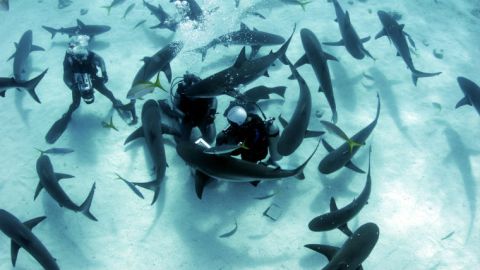Joi Ito’s Deep Dive

JoiIto, the director of the MIT Media Lab, followed a very unorthodox career path. He dropped out of college but became a lifelong learner and a highly successful venture capitalist. At the MIT Media Lab, Ito has championed that institution’s inter-disciplinary approach to problem-solving. That means instead of specializing in a single discipline his team of researchers go deep enough in a number of fields in order to understand the nuances and connect with other experts and peers.
Ito has applied this philosophy in his own life as well. For example, he is an avid scuba diver. Not only has Ito participated in dangerous dives in which he feeds sharks, he has become an instructor as well. As Ito points out, “they have more tools for scuba diving instructors than our teachers do in elementary schools.” Scuba diving is a great model for teaching, Ito says, because you are shown exactly why you are learning something and it is immediately actionable.
Watch the video here:
What’s the Significance?
The authors of a report on radical innovation by the University of Cambridge Computer Lab present the fundamental insight that “in the knowledge economy, it is often the case that the right knowledge to solve a problem is in a different place to the problem itself, so interdisciplinary innovation is an essential tool for the future.”
Our great challenge in the present, of course, is that many educational or professional institutions are not designed for interdisciplinary innovation. In fact, we erect all sorts of boundaries to structure knowledge — boundaries that are either professional, social, or even physical ones.
Many academics complain that there are large disincentives to do interdisciplinary work. For instance, Elinor Ostrom, the winner of the 2009 Nobel Prize in economics told Big Think in this interview that the social sciences are not well integrated in her view.
This balkanization of knowledge, if you will, is a complete anathema to Joi Ito, whose institution empowers risk-taking and other gallantly unorthodox approaches to invention.
While interdisciplinary innovation in this sense is modelled around collaboration and teamwork, Ito describes this skill in the context of individual learning. While a number of Ito’s colleagues at MIT have PhDs in multiple fields, Ito, on the other hand, has achieved a remarkably amount as a college dropout. What’s his secret? Ito tells Big Think about the value of diving deep in a number of subjects, that is to say, deep enough to understand the nuances of a given field and collaborate where necessary with key experts.
This approach is broadly applicable in the business context. In our rapidly changing economy it is necessary for businesses to innovate if not wholly reinvent themselves again and again. Think Amazon. However, reinvention often means retraining workers who might be highly specialized in one field. Companies often lack the tools to teach professional development. And yet, businesses could learn a lot from scuba diving, in which the learning outcome is immediately apparent.
Ito says:
The reason I became an instructor rather than just a scuba diver is that, teaching SCUBA diving, they have more tools for scuba diving instructors than our teachers do in elementary schools. It’s really almost sad. The way they teach you how to teach is incredibly well-done. And SCUBA diving is also very experienced-based. And I love working with the young kids, you know, like junior high school kids. And so you see, you’ve got to learn Boyle’s Law because in an hour we will be in the water and we’ll be playing with stuff and unless you understand what’s going on, you could hurt yourself or now you have to understand, you know, the biology and you have to understand fish ID, because this fish is poisonous and this one isn’t.
This post is part of the series Input/Output, sponsored by HP Input/Output.
Image courtesy of Shutterstock
Follow Daniel Honan on Twitter @Daniel Honan





